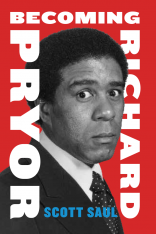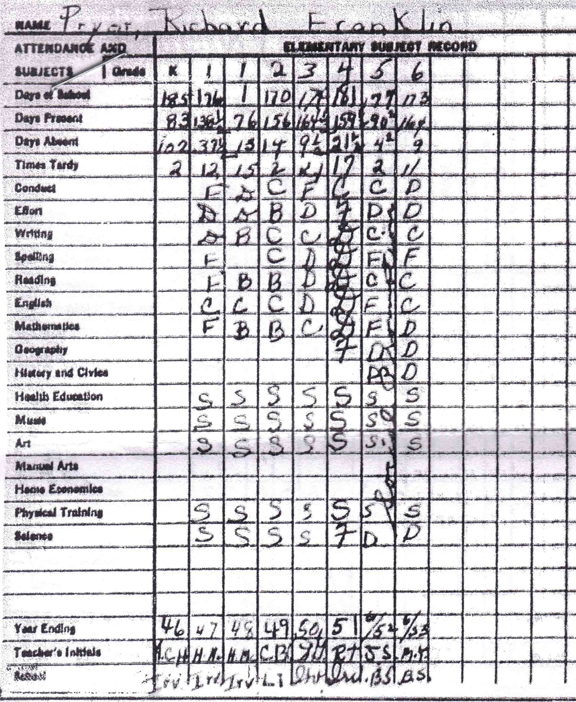At a glance, the takeaway from Richard Pryor’s school record is that he didn’t do so well in school.
If we look longer, the record suggests the trying circumstances of his childhood: seven different residences in as many grades, seven different schools, divorced parents, and a stint in Springfield, Illinois, where his mother Gertrude moved after separating from his father Buck. A label of “apparently unstable emotionally” was placed on him as early as first grade, the year after his parents’ divorce.
The string of C’s, D’s, and F’s ends abruptly: no spring semester for ninth grade. Richard was kicked out of Central High School for punching his teacher Walter Fink. “S[tudent] can’t return,” noted the administrator on his report card. A large majority of black teens dropped out, or were expelled, from Peoria schools in the 1950s and 1960s (the figure was 77% in 1964), and Richard was no exception to the trend.
Perhaps the deepest lesson of Pryor’s school record is how little conventional schooling, in the 1950s, could recognize unconventional talent. On his first round of standardized testing, Pryor scored a 100 — perfectly average.

